Tools we use at locatheart
At locatheart, we continuously carry out projects containing thousands of words into dozens of different languages. In order to ensure proper validation, consistency and coherence of content, as well as to streamline our processes, we employ various tools. The IT era has blessed the translation industry with amazing software that allows us to guarantee top-notch quality.
CAT tools
SDL Trados Studio
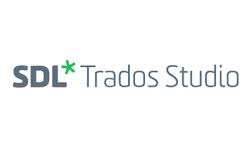
Shortly known as Trados, the CAT (computer-assisted-translation) software is arguably the largest player in the industry. Trados is for the localisation industry what Photoshop and InDesign are for graphic design.
Using Trados, our project managers prepare files that we receive from our clients. They create project packages that translators work on, lock segments that do not require translation, set length limits where need be, add useful comments, and attach translation memories and glossaries that must be followed by linguists.
Phrase

Phrase TMS (formerly Memsource) is a cloud-based solution which offers, among other features, a CAT tool. All work is done online (although it’s possible to download project files) and tasks are assigned to translators via job links. Phrase also boasts a built-in quality assurance module, as well as other useful options.
When it comes to LAH translators and reviewers, they proceed with the text, add necessary corrections and proofread their work. When the task is finished, a ready file is sent back to PMs, who process it further by extracting target version for the client. Such files are verbatim renditions of the original, keeping intact its layout, all fonts, sizes, etc.
Quality Assurance (LQA) tools
Most CAT tools have their own QA features; however, one particular piece of software is a stand-alone jewel that greatly aids the QA process and helps maintain consistency within one text or between different texts:
ApSIC Xbench
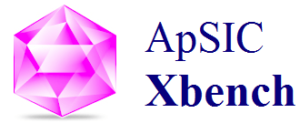
Every Trados project carried out by our translators and reviewers is checked using Xbench. This simple tool gathers data from the translation file (such as a file in the Trados format) and shows all inconsistencies that it finds. They include: different translation for the same original fragment (in case of repetitions), same translation for two different fragments, numeric mismatches, or key term mismatches. Although most validation results are usually false positives, the task is all about discerning which finding is an actual error, and which is not.
ChangeTracker

A small piece of software which lets you compare two bilingual (i.e., containing both the original and translated content) files and find out what differs. It especially comes in handy when an editor forgets to turn on change tracking in Trados but we need to see what has been edited.
Read our guide to discover how a translation agency can help you achieve your goals
Subtitling tools
locatheart linguists work in various subtitling tools, both online and offline. Online tools mostly belong to translation companies that host their own program online and give the translators access to it via links. When it comes to offline software, the best program is, in our humble opinion:
Subtitle Edit
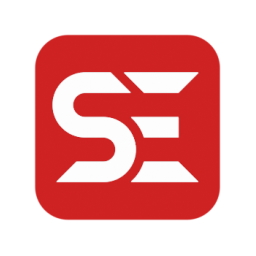
Subtitle Edit is an open-source editor which has all the features needed to create subtitles – either from scratch, or from provided templates. Users can edit text, add functional tags, adjust timecodes, perform searches with regard to different characters (also with the use of regular expression string-searching algorithms), share timecodes between various files, and compare files in a convenient, side-by-side view. We perform most offline subtitling and tech-check projects in Subtitle Edit and we are yet to encounter a problem that it would not be able to solve. It even includes a QA module, which provides the opportunity to check the subtitles against pre-selected rules that are included in clients’ style guides.
VR translations
As of 2024, there are no VR headsets that would run CAT tools – and, as this would be extremely inconvenient, it is unlikely it is ever going to happen. But you never know. 😊
What we wish to present in this paragraph is how we approach VR games translation which we take care of. VR sets are still not widespread, so the translators cannot be expected to find the right context for translation themselves. At our Gdańsk office, we have our own Oculus Quest 2 headset, which we use whenever there are any doubts regarding the meaning of translation.

We launch the game in question and see for ourselves where a given string of text is located and what its purpose is. This lets us limit the number of queries sent to the client to a minimum.
Communication tools
As far as sending tasks to our in-house and freelance translators is concerned, we simply use email. This is also the default way of communicating with clients. However, on a daily basis, especially for tasks that require a lot of queries, feedback and information exchange, we use the following programs:
Discord

Discord is our main messaging app for internal conversations. Our in-house linguists use it to discuss current doubts regarding linguistic issues as well as to ask PMs about details of their tasks – as it is quicker than sending email. PM teams coordinate current projects, as does our SEO team.
Slack

When quick response time is crucial, we communicate with several clients via Slack. Slack is extremely useful as far as quick information exchange is concerned – such as when we provide continuous game localisation.
Google Sheets
Google’s office suite comes in handy when we take care of extensive translation projects, with many different languages and lots of content involved. Examples include mobile game localisation.

- Firstly, online glossaries are created for each game, with source English terms and translations into numerous language alongside them.
- Secondly, query sheets are drawn up where linguists may ask questions regarding different issues that they encounter with current tasks – whether unclear meaning, source error or problems with staying within a character count limit.
A similar system is employed for VR translations. What is more, during subtitle projects, we also keep spreadsheets provided by the client in which key names and phrases are included, for translators and reviewers’ reference. We all know how annoying it may be when the same character is referred to using different names across different episodes. If you are interested in how we tackle such challenges, you are welcome to refer to our article on that topic.
Content creation tools
Over the years of locatheart’s activity, we have been expanding our range of language services, enriching it, for example, with copywriting and content creation. As is the case with all other fields we specialise in, these two processes too can be streamlined thanks to designated applications and programs. This category encompasses both content-generating and content-publishing tools. Just as other solutions, we employ them both for in-house purposes (such as creating content for locatheart’s website or social media) and whenever necessitated by a client’s project brief. Our content tools include:
We mostly use this tool to check keyword density and draft internal briefs.
A graphic design platform which we usually employ to design blog and LinkedIn graphics, as well as presentations, e-books, or infographics. We have a paid subscription and used it to prepare posters, leaflets, and badges for our own Localisation Best Practices Conference
An email marketing tool which we utilise to send out our newsletter, email course, and seasonal greetings.
A convenient tool for designing single-page websites. We use it to create landing pages.
A web content management system that we employ in our internal website operations, as well as in projects for clients who have requested direct, on-site content editing.
Internal content management tool.
Project management tools
For day-to-day coordination of projects, our PM teams use various project management tools. We employ various well-known and established apps. Among others, they include:
We use it as a virtual to-do list with tasks and subtasks assigned to team members.
We use it to list our projects, with their wordcounts, language pairs, and occasionally with added subtasks. Our e-commerce translation projects team often utilises Asana infrastructure. Please see an example of how the tasks are organised in an actual working environment:

We use it for storing client guidelines and documentation. Additionally, Jira works as a task board with jobs to do and particular stages of completing them.
Used by one of our clients, who granted us access to this process management solution. Apart from standard features (showing who manages a given task, what stage it is at, etc.), it also offers an option to upload monthly reports, and the client uses it to publish files received from us.
Our internal settlement and management tool.
SEO, KWR, Link Building Tools
As our agency specialises in search-engine optimisation – in addition to localisation – we make use of various pieces of software dedicated to that area.
A true SEO powerhouse. Used to search for key phrases, analyse visibility and external links, and perform technical SEO audits.
A specialised solution used to search for Amazon keywords.
A website crawler, helpful for precise technical audits and SEO-wise site structure analysis.
A tool for searching long-tail keywords, very handy when it comes to headline key phrases.
A link building platform for selling and buying sponsored links.
A solution similar to Linkhouse.
A WordPress plugin that manages all key SEO aspects (keyword density, meta description, SEO title, sitemap).
Analytical Tools
Both for our internal purposes and on behalf of our clients, we use various analytical tools to get insights into data about websites’ performance. Included in our cyclical reports for different client companies is, for instance, information about mean session time, most visited pages, or bounce rate.
Google’s solution offering insights into data about user behaviour, subpage traffic, traffic source, etc.
A tool that provides us with basic and most crucial data regarding a website’s performance in Google search results.
A solution used to track on-site user traffic and behaviour.
Used to mark and analyse conversion, especially in tandem with Google Analytics and Google Ads.
Advertising Tools

For the time being, we use Google Ads to run our own advertising campaigns, although this may soon change, as we’re about to begin managing one of our client’s ads. In Google’s own words, “[t]hrough Google Ads, you can create online ads to reach people exactly when they’re interested in the products and services that you offer.”


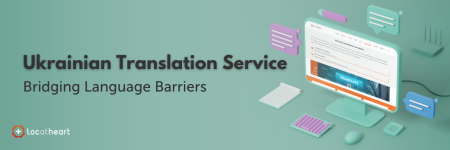
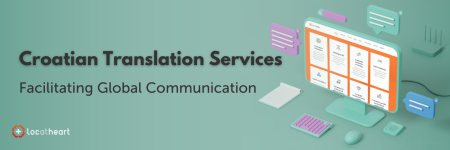

![Translating Japanese Anime versus Western Animation for Children [featured image] - translation agency LocAtHeart](https://locatheart.com/wp-content/uploads/2021/11/LAH_blog_naglowek_nowy_rozmair-3-1-450x231.png)
Leave a Reply